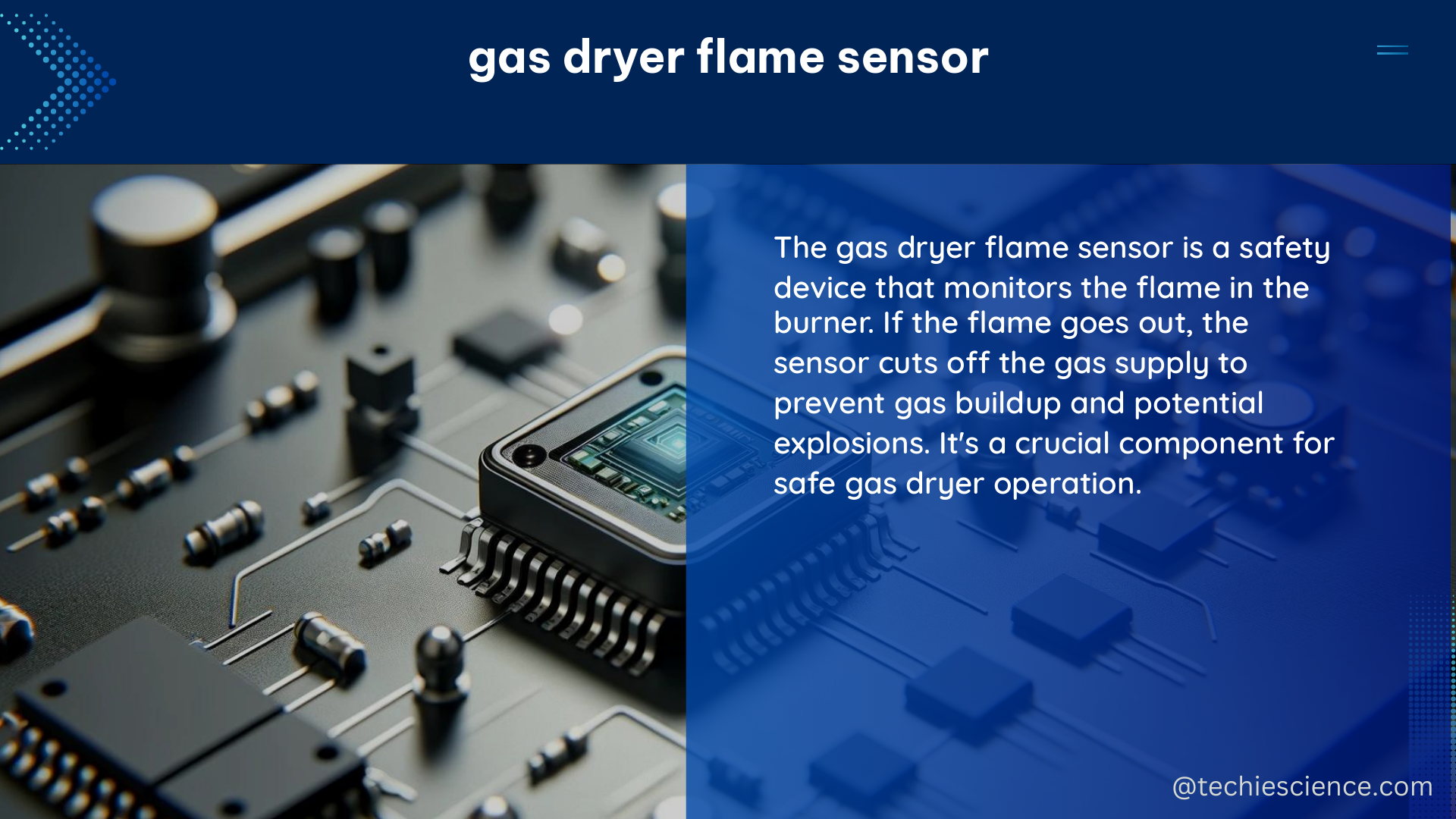The gas dryer flame sensor is a critical component in the safe and efficient operation of gas-powered clothes dryers. This sensor is responsible for detecting the presence of a flame in the burner assembly, ensuring that the gas is burning properly and there is no risk of a gas leak. Understanding the technical specifications, maintenance requirements, and troubleshooting techniques for the gas dryer flame sensor is essential for ensuring the safe and reliable performance of your appliance.
Technical Specifications of the Gas Dryer Flame Sensor
The gas dryer flame sensor is typically made of a specialized material, such as ceramic or stainless steel, which can withstand the high temperatures and harsh environment of the dryer’s burner assembly. The sensor’s technical specifications can vary depending on the manufacturer and model of the appliance, but some common data points include:
| Specification | Range |
|---|---|
| Operating Temperature Range | 300°F to 800°F (149°C to 427°C) |
| Sensitivity Range | 0.5 inches to 3 inches (1.27 cm to 7.62 cm) flame height |
| Response Time | 0.5 seconds to 2 seconds |
| Sensor Material | Ceramic, Stainless Steel |
The operating temperature range of the gas dryer flame sensor is crucial, as it must be able to accurately detect the presence of a flame within the normal operating conditions of the dryer. The sensitivity range, on the other hand, determines the minimum and maximum flame heights that the sensor can detect, ensuring that the burner is functioning properly.
The response time of the sensor is also an important factor, as it dictates how quickly the sensor can detect the presence of a flame and signal the control board to allow gas flow to the burner. A faster response time can help prevent gas buildup and potential safety hazards.
Maintenance and Calibration of the Gas Dryer Flame Sensor

Over time, the gas dryer flame sensor can become dirty or damaged, which can affect its ability to accurately detect the presence of a flame. Regular maintenance and calibration of the sensor are essential to ensure the safe and efficient operation of the dryer.
Cleaning the Flame Sensor
To clean the gas dryer flame sensor, follow these steps:
- Unplug the dryer or turn off the circuit breaker to disconnect power.
- Locate the flame sensor, which is typically located near the burner assembly.
- Use a soft-bristled brush or compressed air to gently remove any lint or debris from the sensor.
- Avoid using abrasive cleaners or tools, as they can damage the sensor.
- Carefully inspect the sensor for any signs of damage, such as cracks or discoloration.
Calibrating the Flame Sensor
If the gas dryer flame sensor is not functioning properly, it may need to be calibrated. The calibration process can vary depending on the manufacturer, but generally involves the following steps:
- Locate the flame sensor adjustment screw or potentiometer, which is typically located near the sensor.
- Use a small screwdriver to adjust the sensor’s sensitivity, following the manufacturer’s recommended settings.
- Test the sensor’s operation by turning on the dryer and observing the flame.
- Repeat the adjustment process until the sensor is accurately detecting the flame.
It is important to follow the manufacturer’s instructions carefully when calibrating the gas dryer flame sensor to avoid damaging the component or creating safety hazards.
Troubleshooting the Gas Dryer Flame Sensor
If the gas dryer is not heating or the burner is not igniting, the flame sensor may be the culprit. Here are some common troubleshooting steps to diagnose and address issues with the gas dryer flame sensor:
- Visual Inspection: Carefully inspect the flame sensor for any signs of damage, such as cracks, discoloration, or debris buildup.
- Continuity Test: Use a multimeter to check the continuity of the flame sensor. If the sensor is not showing continuity, it may need to be replaced.
- Voltage Test: Check the voltage at the flame sensor terminals to ensure that the control board is providing the correct voltage to the sensor.
- Alignment Check: Ensure that the flame sensor is properly aligned with the burner assembly, as any obstructions or misalignment can prevent the sensor from accurately detecting the flame.
- Replacement: If the flame sensor is damaged or not functioning properly, it will need to be replaced. Follow the manufacturer’s instructions for the proper replacement procedure.
By understanding the technical specifications, maintenance requirements, and troubleshooting techniques for the gas dryer flame sensor, you can ensure the safe and reliable operation of your gas-powered clothes dryer.
References:
- Gas Dryer Flame Sensor Replacement – PartsSelect
- How to Test and Replace a Gas Dryer Flame Sensor – Family Handyman
- Gas Dryer Flame Sensor – AppliancePartsPros

The lambdageeks.com Core SME Team is a group of experienced subject matter experts from diverse scientific and technical fields including Physics, Chemistry, Technology,Electronics & Electrical Engineering, Automotive, Mechanical Engineering. Our team collaborates to create high-quality, well-researched articles on a wide range of science and technology topics for the lambdageeks.com website.
All Our Senior SME are having more than 7 Years of experience in the respective fields . They are either Working Industry Professionals or assocaited With different Universities. Refer Our Authors Page to get to know About our Core SMEs.